Hey, let’s tackle fungal infections in your garden before they wreak havoc. Start by checking your plants every day, especially after rain, focusing on leaf undersides for odd spots or fuzz. Notice any white powdery mildew or yellowing edges? There’s more to spot, and quick action can save your plants—stick with me to uncover the sneaky signs and stop these invaders fast.
Contents
Early Fungal Spotting
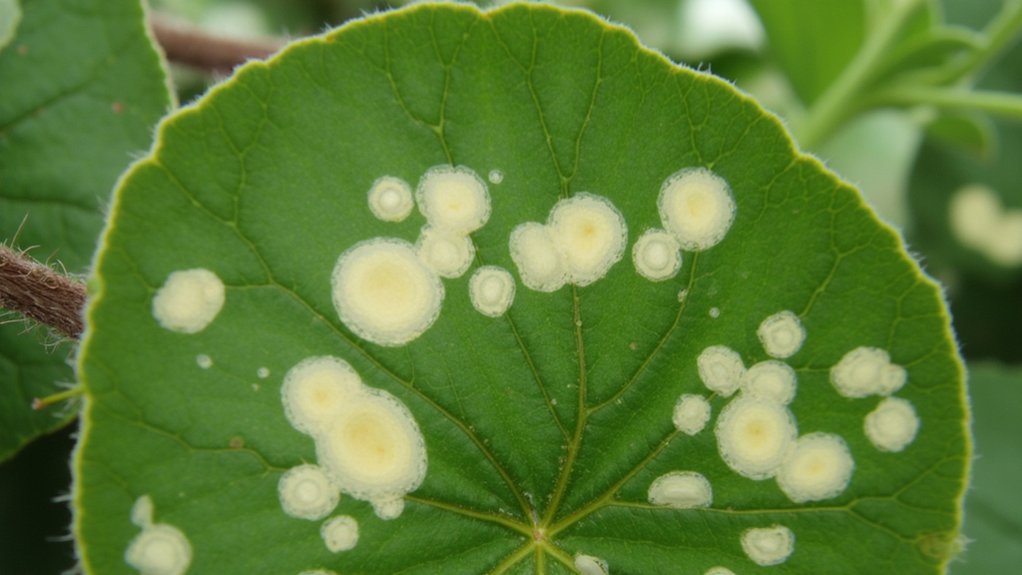
Hey, let’s plunge into spotting fungal infections early in your garden. You’ve gotta catch these sneaky invaders before they spread, so start inspecting your plants daily. Look for tiny, white powdery spots or dark, fuzzy patches on stems and undersides of leaves. Check especially after rainy days, as moisture fuels fungal growth.
Get up close—use a magnifying glass if needed—and search for specks smaller than a pencil eraser, about 1-2 millimeters wide. If you spot anything odd within 48 hours of rain, act fast. Snip off affected parts with clean scissors, and don’t let them touch healthy plants. Bag and trash them immediately.
Stay vigilant, especially in humid weeks. You’re the first defense, so keep those eyes peeled!
Yellowing Leaves
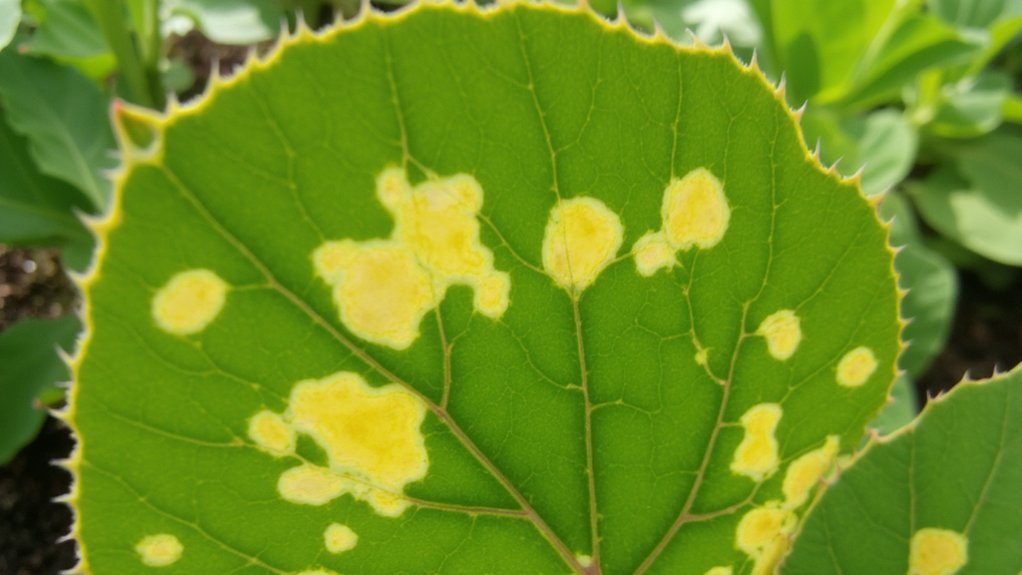
Three key signs can point to fungal issues when you’re checking for yellowing leaves in your garden. First, look for uneven yellow patches, not just overall fading. These often start small, about 1-2 inches wide, near leaf edges.
Next, check the underside of leaves for tiny, fuzzy growths or spots. If you spot any, that’s a red flag for fungal spread. Use a magnifying glass if needed to see details up close.
Lastly, notice if yellowing worsens after rain or high humidity. Fungi thrive in dampness, so track changes within 48 hours of wet weather. If you see these signs, act fast—remove affected leaves with clean shears, and bag them to stop spores from spreading further in your garden.
Powdery Mildew Spots
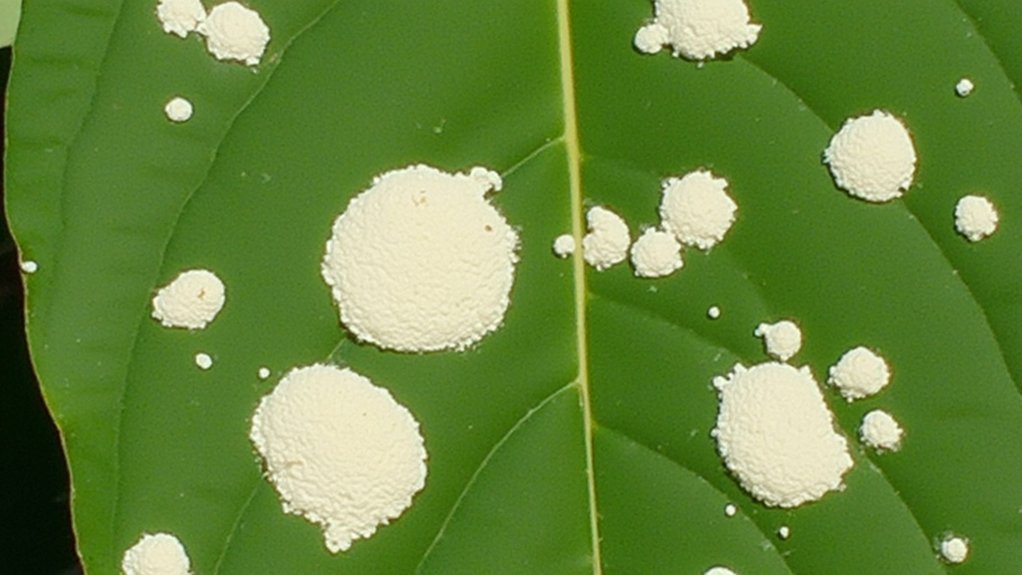
While you’re scanning your garden for trouble, powdery mildew spots can sneak up as a sneaky fungal culprit. You’ll notice them as white, powdery patches on leaves, stems, or even buds. They often start small, about the size of a dime, but can spread fast if ignored.
Don’t wait to act; check your plants daily, especially during humid, warm weather with poor air circulation. Look closely at the upper leaf surfaces, as that’s their favorite spot. If you spot any, snip off affected parts immediately with clean shears, and toss them in a sealed bag, not your compost.
Prevent further spread by spacing plants at least 18 inches apart. Water at the base, not overhead, to keep leaves dry and mildew at bay.
Black Spot Appearance

As you inspect your garden for issues, black spot might catch your eye with its telltale marks. You’ll notice small, dark circles, about 1/8 to 1/2 inch in diameter, on the leaves of roses or other plants. They often start on lower leaves, spreading if unchecked.
Look closely, and you’ll see these spots have jagged edges, almost like tiny ink blots. They can merge into larger patches over a week or two, weakening your plants. Check both sides of the leaves, especially in humid weather, since that’s when black spot thrives.
Don’t ignore it—act fast! Remove infected leaves immediately, and don’t compost them; bag and discard to stop the spread. Keep an eye out daily for new spots.
Rusty Leaf Patches
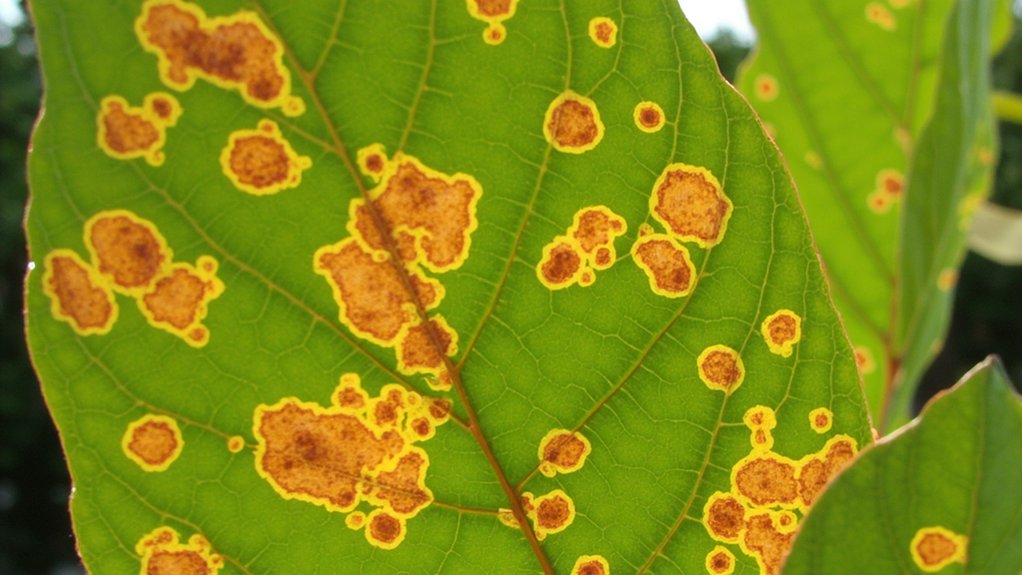
Hey, let’s tackle another sneaky garden issue: rusty leaf patches. You’ve likely spotted these orange-brown spots on your plants’ leaves, right? They’re often a sign of rust fungus, a pesky infection that spreads fast in damp conditions.
Check the undersides of leaves for tiny, powdery pustules, usually 1-2 millimeters wide. If you see them, act quickly—don’t wait for the patches to cover entire leaves. Use a clean cloth to wipe off affected areas, and bag the debris to avoid spreading spores.
Next, apply a fungicide labeled for rust, following the bottle’s instructions precisely. Reapply every 7-10 days if humidity persists, and water at the base to keep leaves dry. Stay vigilant; catch this early, and you’ll save your garden!
Wilting Stem Bases
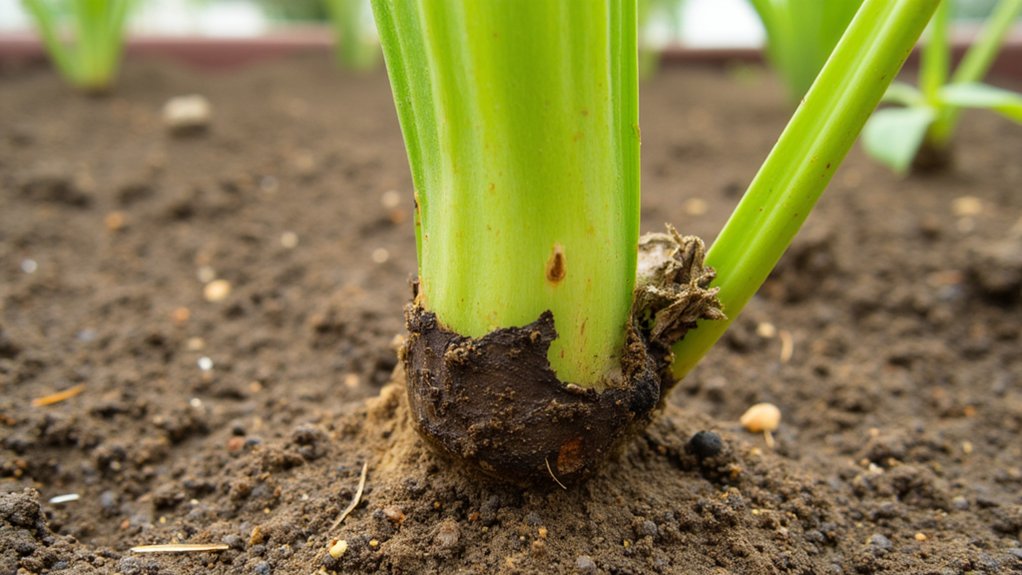
Let’s shift gears and tackle another garden headache: wilting stem bases. You’ve likely noticed plants drooping at the base, looking sad. This often signals a fungal issue, like root rot or damping-off, attacking the stem.
Check for mushy, darkened areas near the soil line, about 1-2 inches up. If you gently tug, the stem might break easily, exposing a slimy texture. Don’t ignore this; it spreads fast, often within a week if damp conditions persist.
Act quickly by cutting away affected parts with a sterilized knife. Then, improve drainage—add gravel or raise beds if soil stays soggy. Water only when the top inch feels dry, and avoid overhead splashing. You’ve got this; just stay vigilant!
Unusual Leaf Discoloration

Ever wonder why your garden leaves look off, sporting weird colors? You’re likely dealing with fungal infections causing unusual leaf discoloration. Check for yellow, brown, or black patches, often starting small, about 1-2 millimeters wide, before spreading.
First, inspect your plants daily, especially after rainy days. Fungi thrive in damp conditions, so look closely at leaf undersides for tiny spots or powdery coatings. If you spot these, don’t wait—act fast. Grab a pair of clean, sharp scissors, and cut off affected leaves, disposing of them in a sealed bag.
Next, boost air circulation around plants by spacing them at least 12 inches apart. Treat with a fungicide, following label instructions, applying every 7-10 days until the discoloration stops. You’ve got this!
Moldy Soil Surface
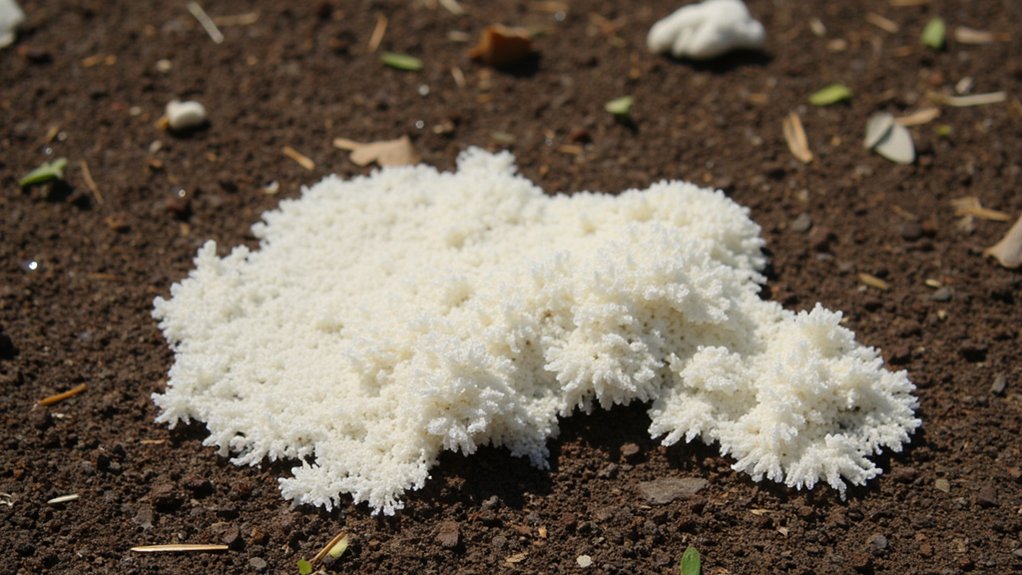
Noticing a fuzzy, weird layer on your garden soil? Don’t ignore it, buddy, ‘cause that’s likely a moldy soil surface, a sneaky fungal issue. It often shows up as white or grayish fuzz, especially in damp, shady spots.
This mold thrives when there’s poor drainage or too much moisture. Check if your soil stays soggy after watering; that’s a big clue. To fix it, first, scrape off the top 1-2 inches of affected soil carefully. Dispose of it far from your garden.
Next, improve air circulation by spacing plants at least 12 inches apart. Water only in the early morning, using about 1 inch per week, so soil dries out a bit. If it persists, mix in coarse sand to boost drainage fast.
Fuzzy Fruit Growth
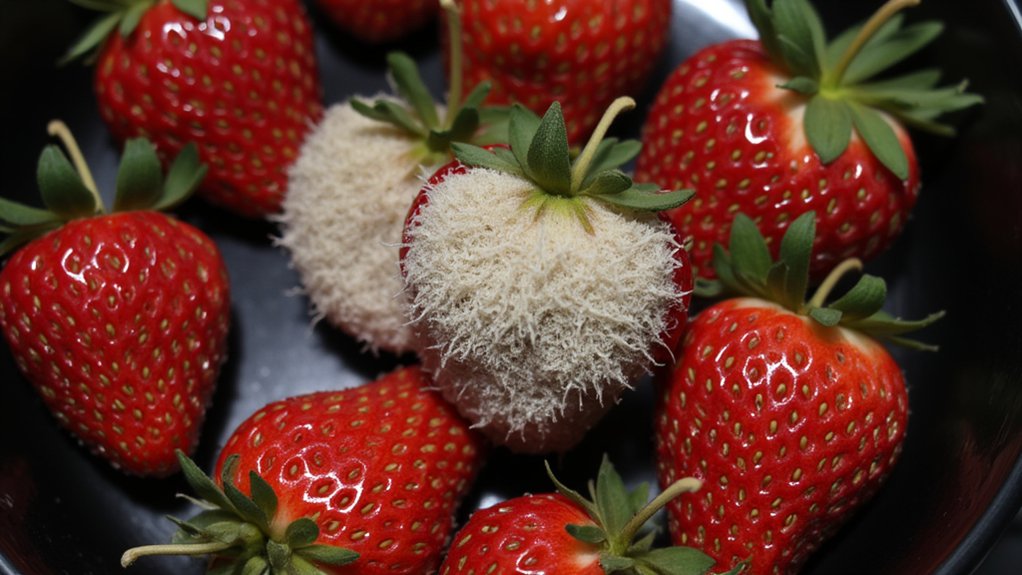
Spot a strange, fuzzy coating on your garden fruits? Don’t ignore it, because that’s likely a fungal infection, often gray mold or Botrytis. It thrives in damp, humid conditions, attacking soft fruits like strawberries or grapes. You’ll see fuzzy, grayish-white patches spreading fast if unchecked.
Act quickly to save your harvest. First, remove infected fruits—don’t compost them, as spores spread easily. Bag and trash them instead. Then, improve air circulation by spacing plants at least 12 inches apart, trimming dense foliage.
Check daily for new fuzz, especially after rain. If it persists, apply a fungicide labeled for edible crops, following the bottle’s mix rate, often 1 tablespoon per gallon. Spray every 7-10 days until it’s gone. You’ve got this!
Slimy Root Rot
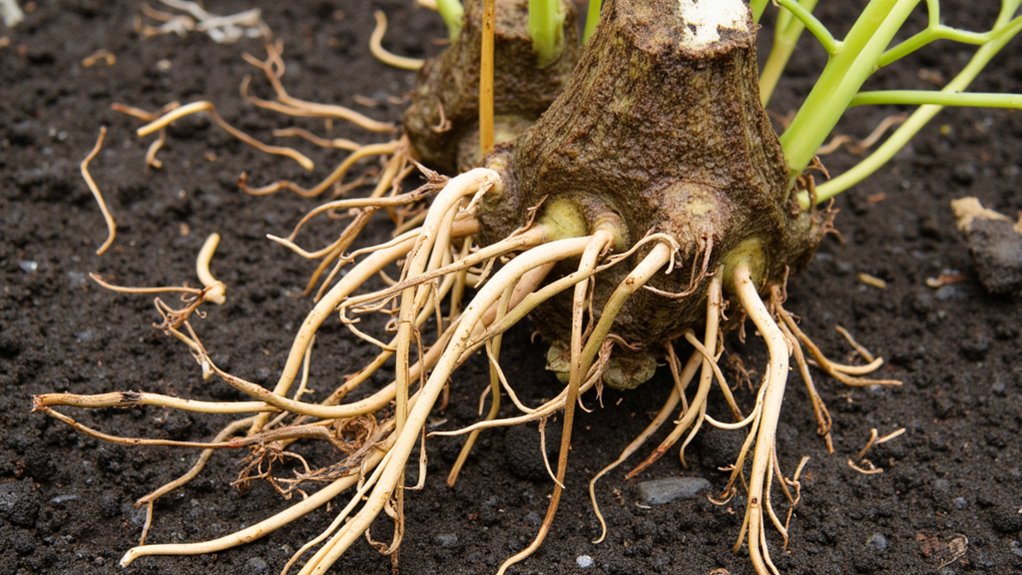
Something odd happening below the soil might catch your eye if your plants look droopy or stunted. Slimy Root Rot, a nasty fungal issue, might be the culprit. You’ll notice roots turning dark, mushy, and, well, slimy. Dig up a small section, about 6 inches deep, and check for a foul odor—that’s a dead giveaway.
Don’t wait to act, or you’ll lose your plants. Cut away the affected roots with clean shears, sterilizing them between cuts with rubbing alcohol. Then, improve drainage by adding coarse sand or gravel, about 2 inches thick, to the soil mix. Finally, water less often, only when the top 1 inch of soil feels dry. Keep an eye out for recurrence over the next 2-3 weeks.
